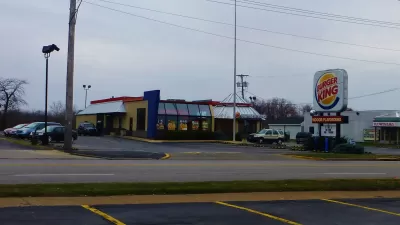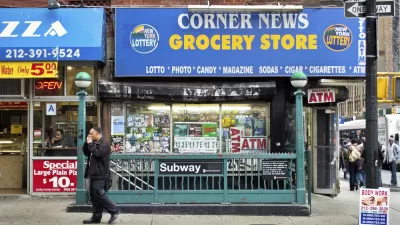Quartz makes the point that supermarkets alone won't solve the problem of poor diets among low-income Americans.

Deena Shanker responds to recent analysis by the Associated Press about the tendency of major grocers to avoid opening up new stores in food deserts.
That "doesn’t speak well of the supermarket industry’s efforts to help convert the nation’s nutritional wastelands into bastions of healthier eating," writes Shanker, referring to a 2011 pledge by a group of major food retailers to open 1,500 new stores in neighborhoods with no supermarkets by 2016. The food retailers have fallen short of that pledge, made as part of First lady Michelle Obama's "Let's Move" healthy eating initiative,
"But putting the focus on retailers misses the bigger picture," according to Shanker: "Supermarket access is just one piece of why low-income Americans tend to eat less healthy diets than higher-income Americans."
To make that case, Shanker cites data from a study by the U.S. Department of Agriculture (USDA) [pdf] into the relationship between food access and food choices. The report found that low-income shoppers simply make different food choices—even when access to better foods is available—but that price has little with those choices. The article goes on to explain some of the multiple solutions that can help address the challenge of obesity and diet quality, as they actually exist.
FULL STORY: It’s easy—but wrong—to blame supermarkets for food deserts

Pennsylvania Mall Conversion Bill Passes House
If passed, the bill would promote the adaptive reuse of defunct commercial buildings.

Planning for Accessibility: Proximity is More Important than Mobility
Accessibility-based planning minimizes the distance that people must travel to reach desired services and activities. Measured this way, increased density can provide more total benefits than increased speeds.

World's Largest Wildlife Overpass In the Works in Los Angeles County
Caltrans will soon close half of the 101 Freeway in order to continue construction of the Wallis Annenberg Wildlife Crossing near Agoura Hills in Los Angeles County.

Eviction Looms for Low-Income Tenants as Rent Debt Rises
Nonprofit housing operators across the country face almost $10 billion in rent debt.

Brightline West Breaks Ground
The high-speed rail line will link Las Vegas and the Los Angeles area.

Colorado Bans No-Fault Evictions
In most cases, landlords must provide a just cause for evicting tenants.
City of Costa Mesa
Licking County
Barrett Planning Group LLC
HUD's Office of Policy Development and Research
Mpact Transit + Community
HUD's Office of Policy Development and Research
Tufts University, Department of Urban and Environmental Policy & Planning
City of Universal City TX
ULI Northwest Arkansas
Urban Design for Planners 1: Software Tools
This six-course series explores essential urban design concepts using open source software and equips planners with the tools they need to participate fully in the urban design process.
Planning for Universal Design
Learn the tools for implementing Universal Design in planning regulations.


























